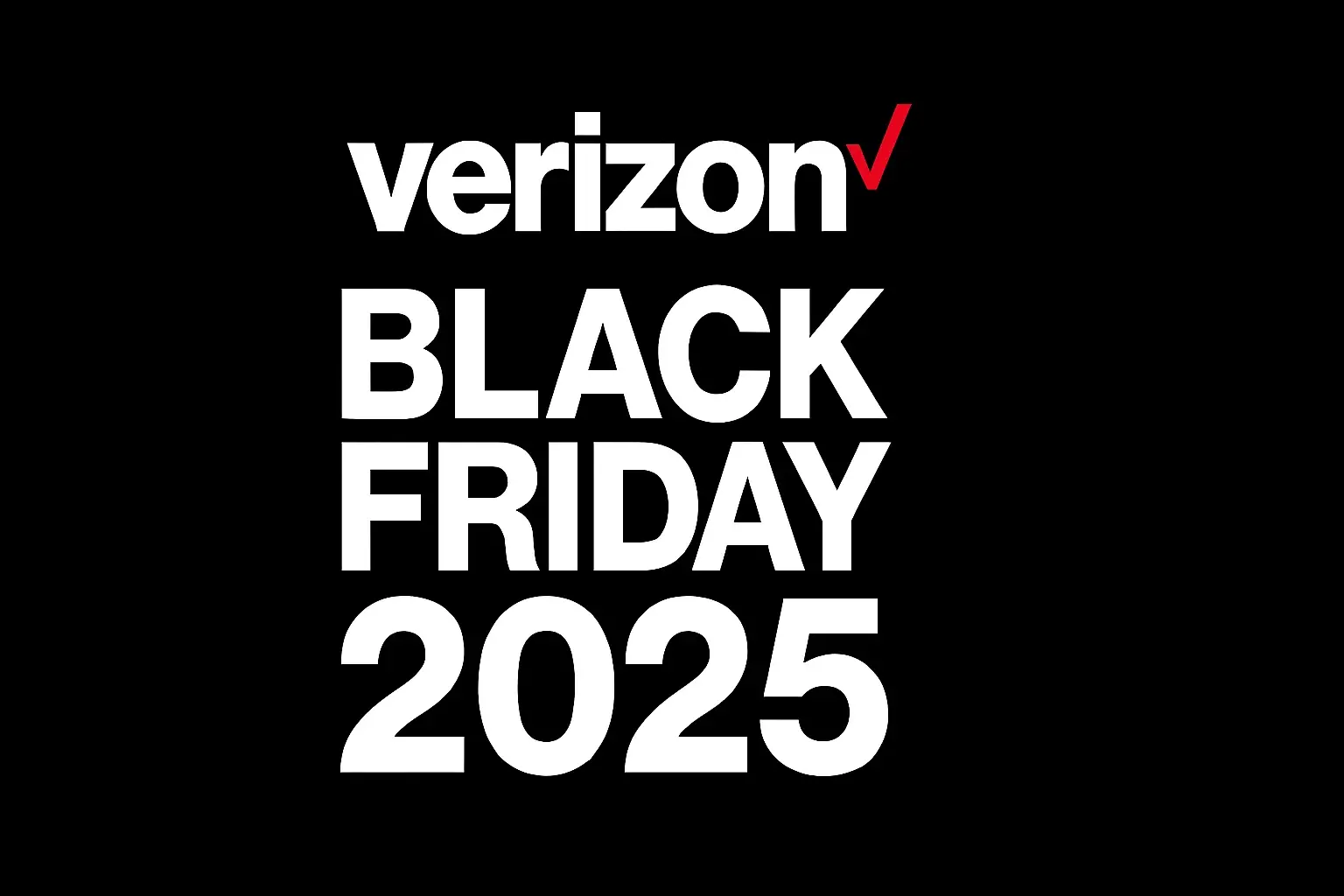Why does Verizon charge so much?

Verizon's premium pricing often sparks debate, but understanding the underlying factors reveals a complex interplay of network investment, technological innovation, and customer service. This guide breaks down why Verizon's charges may seem high and what value you're actually receiving.
Understanding Verizon's Premium Pricing Strategy
Verizon has long positioned itself as a premium provider in the telecommunications market. This strategy isn't accidental; it's built on a foundation of perceived quality, reliability, and cutting-edge technology. When users ask, "Why does Verizon charge so much?", they are often seeking to understand the justification for these higher costs compared to some competitors. The answer lies in a multi-faceted approach that prioritizes network performance, continuous innovation, and a robust customer experience. This isn't just about offering a phone plan; it's about delivering a comprehensive connectivity solution that aims to be best-in-class. From the vast investments in their 5G network to the intricate details of their service plans, every element contributes to Verizon's pricing structure. We'll delve into each of these components to provide a clear picture of the value proposition and the reasons behind Verizon's premium positioning in the competitive mobile landscape of 2025.
The Backbone: Network Infrastructure and Investment
The most significant driver behind Verizon's pricing is its unwavering commitment to building and maintaining a superior network infrastructure. In the world of mobile communication, the network is everything. It's the invisible scaffolding that supports every call, text, and data stream. Verizon consistently invests billions of dollars annually to ensure its network is not only extensive but also robust, fast, and reliable. This dedication is particularly evident in their 5G rollout, a massive undertaking that requires significant capital expenditure.
5G Network Expansion: The Future is Now
As of 2025, 5G technology is no longer a novelty but a crucial component of mobile service. Verizon has been at the forefront of deploying its 5G Ultra Wideband network, which offers unparalleled speeds and low latency. This advanced network requires a vast deployment of new cell sites, fiber optic backhaul, and sophisticated spectrum management. The cost of acquiring spectrum licenses from the government alone can run into the tens of billions of dollars. Furthermore, the physical installation of 5G equipment, including small cells and upgrades to existing towers, is an ongoing and expensive process. These investments are directly reflected in the pricing of plans that offer access to the full capabilities of this next-generation network. Users benefit from faster downloads, smoother streaming, and the potential for new applications like augmented reality and advanced IoT services, but this cutting-edge experience comes at a price.
4G LTE Reliability: The Foundation of Trust
While 5G garners much attention, Verizon's 4G LTE network remains a critical pillar of its service. It's renowned for its reliability and widespread coverage, often cited as a key differentiator. Maintaining and upgrading this extensive 4G network, which still serves a significant portion of users and devices, also incurs substantial costs. This includes ongoing maintenance, spectrum re-farming to optimize capacity, and ensuring seamless handoffs between cell sites. The goal is to provide consistent service even in areas where 5G might not yet be fully deployed or optimal. This commitment to a dependable 4G experience, which many users still rely on daily, contributes to the overall operational expenses that influence pricing.
Infrastructure Upgrades and Maintenance
Beyond the core wireless technology, Verizon invests heavily in its wired infrastructure, including fiber optic networks that connect cell towers and data centers. This fiber backbone is essential for delivering the high speeds and capacity promised by 4G and 5G. Maintaining this vast network of physical infrastructure, from underground cables to rooftop antennas, involves continuous upkeep, repairs, and upgrades. The sheer scale of managing a national network, ensuring its resilience against environmental factors and technical failures, is a monumental task with commensurate costs. These operational expenditures are fundamental to providing a high-quality service and are factored into the price customers pay.
Spectrum Acquisition and Management
Wireless carriers operate by using radio spectrum, a finite resource. Verizon, like its competitors, must acquire licenses to use specific frequency bands. These licenses are auctioned by regulatory bodies, such as the Federal Communications Commission (FCC) in the United States, and can cost billions of dollars. The ongoing need to acquire new spectrum, particularly for 5G deployment, and to manage existing spectrum efficiently to maximize capacity and performance, represents a significant ongoing investment. These substantial upfront and recurring costs are a direct contributor to the pricing of Verizon's services.
Network Performance Metrics: Data Speaks
Independent analyses and consumer reports in 2025 continue to highlight Verizon's strong performance in network speed, reliability, and coverage. For example, reports from Ookla (Speedtest) and RootMetrics frequently rank Verizon highly for overall network performance. While these rankings are based on extensive testing, the underlying infrastructure and technology required to achieve these results are costly. Customers paying a premium are, in theory, paying for this consistently high level of performance, which translates to fewer dropped calls, faster data speeds, and broader coverage compared to networks with less investment.
Staying Ahead: Technological Advancements and Innovation
The telecommunications industry is characterized by rapid technological evolution. To maintain its leadership position, Verizon must constantly invest in research and development (R&D) and adopt new technologies. This commitment to innovation is another key reason for its premium pricing.
Pioneering New Technologies
Verizon has a history of being an early adopter and developer of new mobile technologies. This includes being one of the first to launch 4G LTE and now aggressively pushing 5G. Beyond the core network, Verizon invests in developing and integrating technologies that enhance the user experience, such as network slicing for specialized applications, advanced antenna technologies (like Massive MIMO), and edge computing capabilities. These innovations require significant R&D budgets, partnerships with technology providers, and the expertise of highly skilled engineers and technicians. The fruits of this innovation – faster speeds, lower latency, and new service possibilities – are what customers ultimately pay for.
Device Compatibility and Support
As new technologies emerge, so do new devices designed to leverage them. Verizon works closely with device manufacturers to ensure its network is compatible with the latest smartphones, tablets, and other connected devices. This often involves testing, certification, and sometimes even co-development efforts. Furthermore, supporting a wide range of devices, from the latest flagship models to older but still functional devices, requires a complex and robust network infrastructure that can accommodate various technologies and protocols. The ongoing effort to stay current with device evolution and ensure seamless integration adds to operational costs.
Future-Proofing the Network
The telecommunications landscape is constantly shifting, with new demands placed on networks by emerging applications and increasing data consumption. Verizon's strategy involves not just meeting current needs but also anticipating future demands. This includes investing in technologies that will enable future services, such as advanced mobile gaming, immersive virtual and augmented reality experiences, and the widespread adoption of the Internet of Things (IoT). These forward-looking investments are crucial for long-term competitiveness but require substantial upfront capital that is recovered through current service pricing. Essentially, customers are paying, in part, for the assurance that their service will remain capable and relevant for years to come.
The Human Element: Customer Service and Support
While network and technology are crucial, the customer experience also plays a significant role in Verizon's pricing strategy. A premium service often includes a commitment to higher levels of customer support and service offerings.
Customer Support Channels and Quality
Verizon offers multiple customer support channels, including phone, online chat, in-store assistance, and self-service options via its app and website. Maintaining a large network of call centers, employing knowledgeable support staff, and providing accessible in-store locations all incur significant operational costs. The aim is to provide efficient and effective problem resolution, whether it's troubleshooting a technical issue, explaining a bill, or assisting with plan changes. While some competitors may offer more limited support options to cut costs, Verizon's approach aims to provide a more comprehensive and responsive customer service experience, which is reflected in its pricing.
In-Store Experience and Retail Presence
Verizon maintains a substantial retail footprint with numerous stores across the country. These stores serve as points of sale, customer service centers, and device demonstration hubs. The cost of operating these physical locations, including rent, utilities, staffing, and inventory, is considerable. This retail presence allows customers to interact with the brand in person, receive hands-on assistance, and explore new devices, contributing to a perceived higher level of service and support compared to carriers that rely solely on online or phone-based interactions.
Customer Retention Programs and Loyalty Benefits
To retain its premium customer base, Verizon often implements loyalty programs, offers exclusive deals, and provides perks to long-term subscribers. These initiatives, while beneficial for customers, also represent an investment by the company. The costs associated with these programs, such as discounts, bundled services, or early upgrade offers, are factored into the overall pricing structure. The objective is to foster customer loyalty and reduce churn, which is often more cost-effective than acquiring new customers.
Decoding Your Bill: Plan Structures and Features
The way Verizon structures its plans and the features included are direct determinants of cost. Understanding these elements can shed light on why one plan is more expensive than another.
Tiered Plans and Data Allowances
Verizon offers a range of plans, often categorized by data allowances, network access (e.g., 5G Ultra Wideband vs. 4G LTE), and included features. Higher-tier plans typically offer unlimited data, premium data speeds, larger hotspot data allowances, and access to the fastest network capabilities. These premium features come at a higher price point. The cost is directly tied to the amount of data provided, the speed at which it can be accessed, and any prioritization or de-prioritization policies that might be in place. For instance, plans that guarantee no data throttling even during network congestion will naturally be more expensive.
Unlimited Data: What It Really Means
While many Verizon plans advertise "unlimited data," it's crucial to understand the nuances. In 2025, most unlimited plans still have a high-speed data threshold. After exceeding this threshold (e.g., 50GB, 100GB), data speeds may be reduced, especially during times of network congestion. Plans that offer truly unlimited high-speed data, or significantly higher thresholds before any potential slowdown, command a premium. The cost reflects the company's ability to manage network capacity and ensure a quality experience for all users, even those with very high data consumption. Understanding these data policies is key to assessing the value of an unlimited plan.
Bundled Services and Perks
Verizon often bundles its mobile services with other offerings, such as streaming service subscriptions (e.g., Disney+, Hulu, ESPN+), cloud storage, or device protection plans. These bundled perks can add significant value for consumers, but they also contribute to the overall cost of the plan. The perceived value of these bundled services can influence a customer's willingness to pay a higher monthly fee. For example, a plan that includes a popular streaming service at no extra charge might be priced higher than a comparable plan without such an add-on, but the net cost for the consumer could be lower if they would have subscribed to the service anyway.
Device Payment Plans and Leases
A significant portion of a customer's bill can also be attributed to the cost of the device itself, especially when purchased through installment plans or leases. Verizon offers financing options for the latest smartphones and other devices. The monthly payments for these devices are added to the service plan charges. High-end smartphones, with their advanced features and technologies, can cost upwards of $1000-$1500 or more, and spreading this cost over 24 or 36 months directly impacts the monthly bill. The interest rates or financing fees associated with these plans also contribute to the total cost.
Add-ons and Premium Features
Beyond the core plan, Verizon offers various add-on services. These can include international calling and texting packages, premium hotspot data, enhanced security features, or specialized data plans for connected devices (like smartwatches or tablets). Each of these add-ons comes with an additional charge. While they provide flexibility and customization, accumulating multiple add-ons can significantly increase the monthly bill. The pricing of these features reflects the specific services and network resources they utilize.
The Competitive Landscape: How Verizon Stacks Up
To understand why Verizon charges what it does, it's essential to compare its offerings and pricing with those of its major competitors in the U.S. market as of 2025.
Network Performance vs. Price
Verizon's pricing is often higher than some competitors, but this is frequently justified by its superior network performance. Competitors like T-Mobile and AT&T also invest heavily in their networks, but independent analyses often show Verizon leading in overall reliability and coverage, particularly in rural areas. For users who prioritize a dependable connection above all else, the premium price might be considered a worthwhile trade-off. For example, in a 2025 RootMetrics report, Verizon was cited for having the most reliable network across the nation, a factor that directly impacts user experience and justifies a higher price point for many.
Feature Comparison: Unlimited Plans
When comparing unlimited plans, the devil is in the details. While many carriers offer "unlimited" data, the specifics of high-speed data allowances, deprioritization thresholds, and included perks vary significantly. Verizon's premium unlimited plans often offer higher high-speed data caps and more robust hotspot allowances compared to the entry-level plans of competitors. For instance, a Verizon "Unlimited Plus" plan might offer 100GB of premium data and 50GB of hotspot data, whereas a competitor's basic unlimited plan might offer only 30GB of premium data and 10GB of hotspot data. These differences in included features directly influence the price.
MVNOs and Budget Carriers
The market also includes Mobile Virtual Network Operators (MVNOs) that lease network capacity from major carriers. Companies like Mint Mobile, Visible (owned by Verizon), and Google Fi offer significantly lower prices. However, these MVNOs often have limitations. They may deprioritize their traffic during network congestion, offer less premium data, have fewer customer service options, and not provide access to the fastest network tiers (like 5G Ultra Wideband). The cost savings come at the expense of network performance and service features. For example, Visible, while using Verizon's network, offers a more basic unlimited plan at a much lower price point, but with a higher likelihood of deprioritization.
Bundling and Promotions
All major carriers engage in promotional offers and bundling strategies to attract and retain customers. Verizon's pricing might appear high when viewed in isolation, but promotional discounts, trade-in offers, and bundled services (like streaming subscriptions or home internet) can significantly reduce the effective monthly cost for many customers. It's important to compare not just the advertised base price but also the total cost after all applicable discounts and promotions over the contract period. For instance, a "Get a new iPhone on us" promotion can make a high-tier plan much more attractive financially.
Here's a simplified comparison table for 2025:
| Carrier | Typical Monthly Price (Unlimited Plan) | Network Performance Perception | Key Differentiators |
|---|---|---|---|
| Verizon | $80 - $100+ | Excellent Reliability & Coverage (esp. 5G UW) | Premium network, robust customer service, device financing |
| AT&T | $75 - $95+ | Very Good Reliability & Coverage | Strong bundling options (HBO Max), good 5G |
| T-Mobile | $70 - $90+ | Good Coverage, Strong 5G Speeds | Aggressive pricing, extensive 5G network, perks |
| MVNOs (e.g., Visible, Mint) | $25 - $50 | Variable (uses major carrier networks, often deprioritized) | Low cost, basic features, limited support |
Getting the Most: Maximizing Value and Saving Money
Even with Verizon's premium pricing, there are strategic ways to maximize the value you receive and reduce your overall expenditure.
Choosing the Right Plan
The most crucial step is to accurately assess your needs. Do you truly require unlimited data, or would a plan with a specific data cap suffice? Consider your typical monthly data usage. Many users overestimate their needs. Verizon's website and app provide tools to track your data consumption, which can help you select a plan that fits your usage patterns without overpaying. For example, if you primarily use Wi-Fi at home and work, a lower-tier plan with a generous data allowance might be more than enough.
Leveraging Promotions and Discounts
Always check for current promotions. Verizon frequently offers deals on new devices, discounts for switching from another carrier, or family plan savings. Keep an eye out for:
- Device Trade-In Offers: Significant discounts on new phones when you trade in an old device.
- Switching Bonuses: Credits or gift cards for new customers who port their number to Verizon.
- Family Plan Discounts: The per-line cost typically decreases as you add more lines to a family plan.
- Autopay and Paperless Billing: Many plans offer a discount for setting up automatic payments and receiving bills electronically.
- Employer Discounts: Some employers have partnerships with Verizon that offer exclusive discounts to their employees.
Bundling Services Wisely
If you also use Verizon for home internet (Fios or 5G Home Internet), bundling your mobile and home services can often lead to discounts. Evaluate whether the bundled perks, such as streaming subscriptions or device protection, align with your actual usage and needs. Sometimes, the perceived value of a bundle is higher than the actual cost savings for your specific situation.
Considering Older or More Affordable Devices
The latest flagship smartphones are expensive. If your budget is a primary concern, consider purchasing a slightly older model or a more budget-friendly device. These phones still offer excellent performance for everyday tasks and can significantly reduce your monthly device payment. You can often find great deals on certified pre-owned devices directly from Verizon or reputable third-party retailers.
Optimizing Data Usage
Be mindful of your data consumption. Utilize Wi-Fi whenever possible. Download content like music and movies over Wi-Fi instead of cellular data. Adjust app settings to limit background data usage. This can help you stay within your data allowance on lower-tier plans or avoid potential slowdowns on unlimited plans.
Exploring MVNOs (with caution)
If cost is the absolute priority and network performance is less critical, consider MVNOs that operate on Verizon's network, such as Visible. These plans offer a much lower monthly cost but come with trade-offs in terms of data prioritization, customer service, and included features. It's essential to research the specific limitations of any MVNO before switching.
Negotiating Your Bill
Don't be afraid to contact Verizon's customer service to inquire about potential discounts or better plan options. Sometimes, simply expressing interest in switching to a competitor can prompt them to offer retention deals or explore alternative plans that better suit your budget. This is particularly effective if you are a long-term customer with a good payment history.
Conclusion: Is Verizon Worth the Cost?
Verizon's premium pricing is a deliberate strategy rooted in substantial investments in its advanced network infrastructure, continuous technological innovation, and a commitment to a high-quality customer experience. The billions poured into deploying and maintaining its 5G Ultra Wideband and reliable 4G LTE networks, acquiring spectrum, and developing new technologies are the primary drivers behind its higher costs. Furthermore, the comprehensive customer support, extensive retail presence, and bundled service offerings contribute to the overall value proposition. While competitors may offer lower prices, they often do so with trade-offs in network performance, data prioritization, or customer service scope. For consumers who prioritize a consistently strong and reliable connection, cutting-edge 5G capabilities, and a robust support system, Verizon's pricing can be justified by the superior service delivered. By carefully evaluating your individual needs, leveraging available promotions, and optimizing your plan, you can indeed maximize the value you receive from Verizon's services and ensure that your investment aligns with your expectations.





